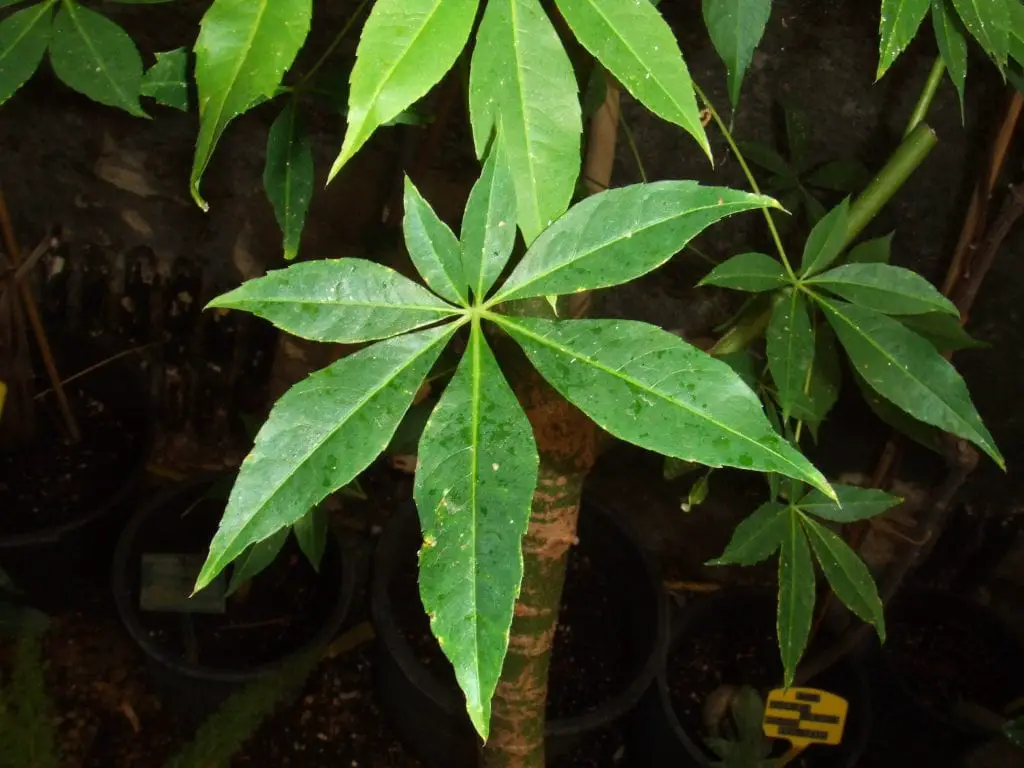

Plants throughout their life may have various problems growing and developing. A sudden change in temperature, wind or drought can weaken them a lot if they are not adapted to the environment.
For this reason, it is important to know and identify the plant physiological disorderssince this way we can act before your health runs the risk of worsening.
Shade


Orchid growing towards the light.
Although there are many plants that grow in shade or semi-shade, most need sun. To these, if they are deprived of light, will have these symptoms:
- The leaves may turn yellow or, on the contrary, acquire a darker green tone at the same time as they grow larger to capture more light.
- The stems are there.
- Absence of flowers.
Sun
Those plants that grow in the shade (calatea, aspidistra, potos, etc.) suffer sunburn if exposed to direct light. But also, if you suddenly put a freshly brought from the nursery that can grow in the sun -such as a Cyca, for example- exposed to the sun, it will also have burns.
Air currents
It is a problem that especially affects plants that are in corridors, near windows, etc. The symptoms are:
- The tips of the leaves turn brown and may even break off.
- Yellowing and subsequent fall of the leaves.
Cold and frost


Cold and frost cause significant damage to tropical or subtropical plants that are living in a climate that is not the most suitable for them. The most frequent symptoms are:
- Death of flowers and fruits.
- Brown or black leaves.
- Stem rot (occurs especially in succulent plants).
Plant that has not »hibernated»
There are many plants that need to go through a period of rest in order to continue growing; that is to say, they need to spend some time during which the temperatures remain somewhat cooler, they are watered little and they are not fertilized. In the event that they do not have it, their symptoms will be:
- The flower buds do not open.
- Slower growth.
- Bad sprouts.
Lack of nutrients


Image – TECHNICROP
Lack of minerals can be lethal to plants. Depending on the nutrient, you will have some symptoms or others, but usually you should know that the leaves tend to yellow until they finish drying and falling. For more information Click here.
Water acidophilic plants with calcareous water
When some plants, such as Japanese maples, camellias, gardenias or azaleas, are watered with calcareous water, what is done is to prevent them from absorbing some essential minerals, such as iron, manganese or zinc. A) Yes, these symptoms appear:
- Yellow leaves with green veins.
- Plants do not grow.
- Fall of leaves and flowers.
- Flower abortion.
Excess fertilizer
Compost is essential for them to develop properly, but If you pour the quantity “by eye”, without reading the manufacturer’s instructions, there is a risk of burns due to overdose.
You need a transplant


Image – flordeplanta.com.ar
If your plants don’t grow, they might need a pot change since its roots will have occupied it all.
Poorly performed pruning
There are some plants that cannot withstand heavy pruning, such as Prunus. What’s more, if they are pruned at times that are not the most suitable they may not bloom that season, or even die if non-disinfected tools have been used.
Soil or compact substrate
If they are planted in a soil or compact substrate, which does not drain the water quickly, they most likely cannot grow well.
Lack of irrigation
All plants need water to live, but the reality is that risk is one of the most difficult things to control. For this reason, it is often said that when in doubt, it is better not to water, but If we make them go thirsty, they will end up having these symptoms:
- Dry leaf tips and edges
- Flower abortion
- Leaf fall if the situation does not improve
Excess irrigation
As bad as watering little is watering excessively. The roots need to be aerated to be able to fulfill their function, which is to absorb water and the nutrients dissolved in it so that the plants can grow. If they are watered too much, they will have these symptoms:
- Leaves yellow or with brown spots.
- Neck rot. In the case of succulents (cacti and succulents), the stems and leaves rot.
- Appearance of fungi.


As you have seen, there are several disorders that can affect plants. We hope that now it will be easier for you to identify them .
